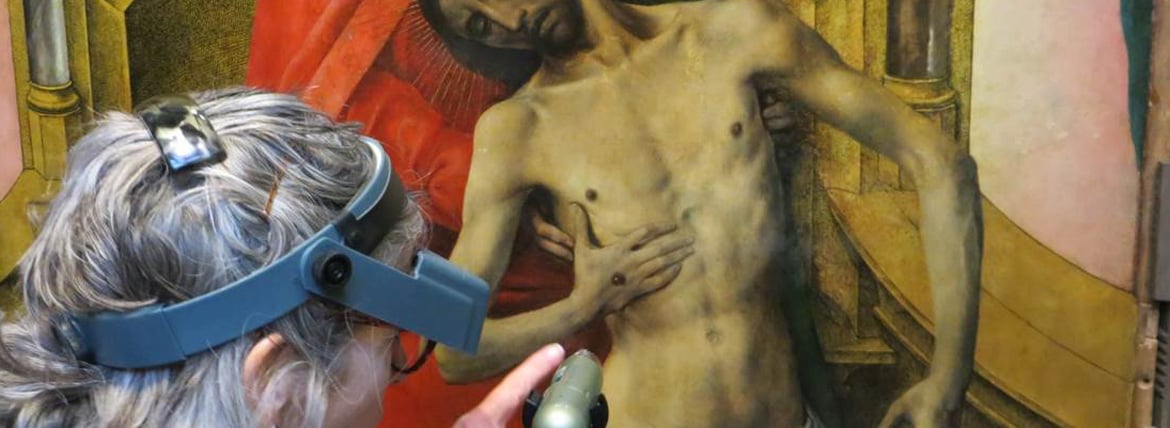
The Trinity Panels by Hugo van der Goes
Move to new location at Scottish National Gallery provides opportunity for study
Figures
The angel’s face is extremely well-preserved, and small hatching brushstrokes blend the paint at the contours of the facial features - for example at the cool mid tones down the side of the nose and along the nostril. Note also the brush tip drawn upwards through the soft paint to form the hairs of the eyebrow.
These techniques can be seen again in the face of the angel working the bellows at the back of the organ. The creamy highlights around the mouth are also typical of Hugo’s technique.
In contrast to the idealised faces of the angels, the two saints were probably taken from portrait drawings made from life. Again, the artist makes use of small hatched brushstrokes in wet paint to describe the sculptural forms of the face and subtle transitions of colour. Note the almost imperceptible change of colour from lip to flesh and the tiny dabs of paint that create his stubble.
Although abraded from previous cleaning, the head of Saint Andrew is compelling, particularly the catchlights in his eyes, which add to the intensity of his gaze. His hair, falling in lank locks, is quite typical of the way the artist painted straight hair. The radiating halo was created from lines of thick oil mordant, rather like a stiff paste coloured with ochres, onto which gold leaf was adhered. Very little of the original gilding survives.







